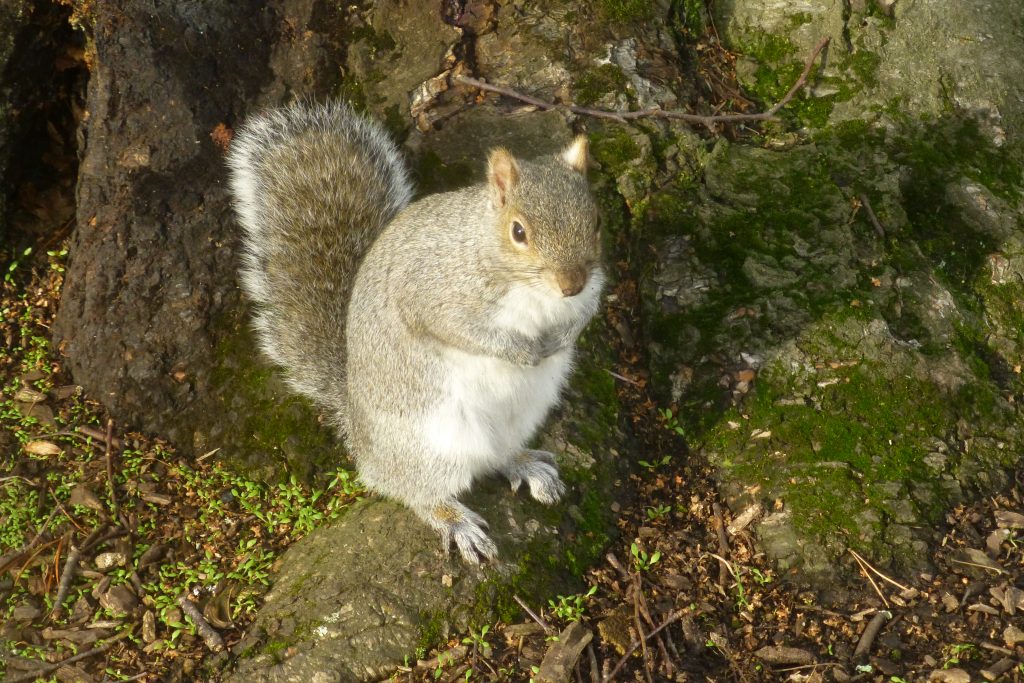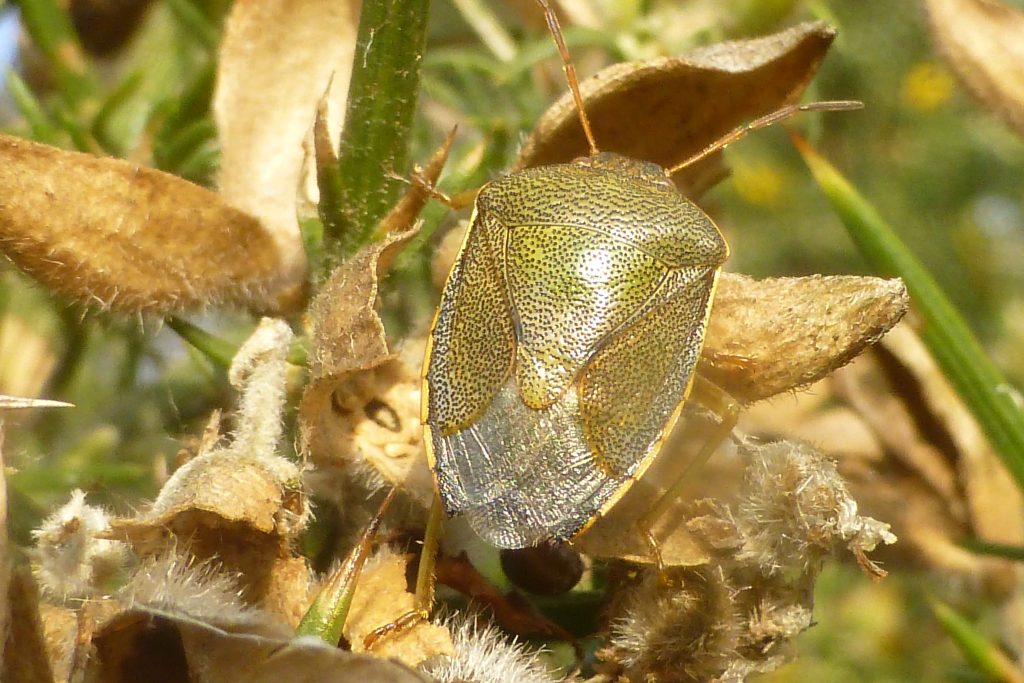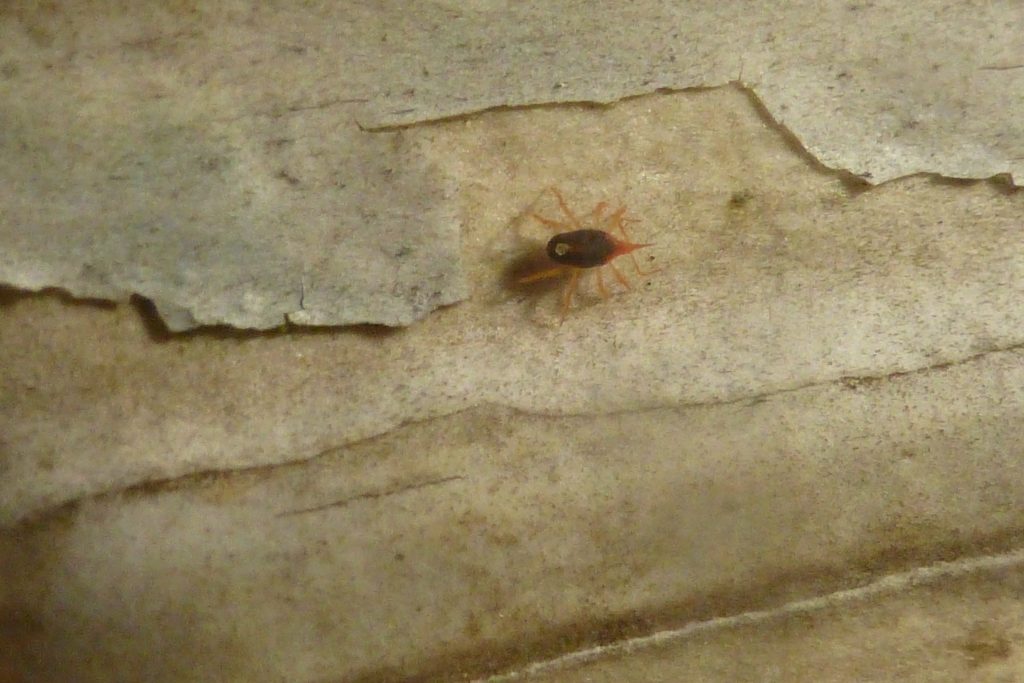February 2017 swung between chilly spells and periods of much milder weather, although stormy periods were few, except at the month’s end when Storms Doris and Ewan crossed the country. Both had little effect in Edinburgh, however. The Garden’s wildlife list now stands at 864, an increase of three; two were new records during the month while the third was a correction of a clerical error.
Birds Fewer bird species were recorded in or over-flying the Garden in February than in January but it was still quite a good month with 36 species recorded. Although Waxwings continued to be present in the Lothians they were not noted in the Garden during February. Kingfishers were present on at least seven occasions from 13th onwards; once again, three different birds (two males and a female) were involved. A Grey Wagtail was present on 23rd. Wintering Blackcap and Redwing remained throughout February; at least two of the Blackcaps revealed themselves to be males as they began singing from 3rd onwards from time to time. Feral Pigeons were seen five times, always in very small numbers. Another usually regular visitor that was recorded only rarely during the month was Grey Heron (twice: 12th, 23rd). A Buzzard flew over on 14th and Tawny Owl was heard hooting after dark on three dates (1st, 7th, 14th). The complete list of 36 species recorded during February 2017 was: Blackbird, Blackcap, Black-headed Gull, Blue Tit, Bullfinch, Buzzard, Carrion Crow, Chaffinch, Coal Tit, Dunnock, Feral Pigeon, Goldcrest, Goldfinch, Great Spotted Woodpecker, Great Tit, Greenfinch, Grey Heron, Grey Wagtail, Herring Gull, Kingfisher, Long-tailed Tit, Magpie, Mallard, Mistle Thrush, Moorhen, Oystercatcher, Redwing, Robin, Siskin, Song Thrush, Sparrowhawk, Stock Dove, Tawny Owl, Tree Creeper, Wood Pigeon, Wren.
Insects and other invertebrates: Honey Bees were seen visiting gorse and Mahonia flowers on all warmer days. On the last day of the month (28th) no fewer than three bumblebee species were seen for the first time in 2017: Buff-tailed, Red-tailed and Tree Bumblebees. February also saw the year’s first hoverfly, the drone-fly Eristalis tenax (14th). Other fly records included the bluebottle Calliphora vicina (2nd, 14th), Phaonia tuguriorum (1st, 2nd, 28th) and the Face Fly (Musca autumnalis) on 8th. The first Gorse Shield Bug and Birch Catkin Bug of the year were recorded on 14th and 15th respectively while Forest Shield Bug nymphs were seen on birch bark on several dates throughout the month. Pine Ladybird (28th) was again the first 2017 record of that species in the Garden. Once again, the barkflies Ectopsocus briggsii and Ectopsocus petersi were recorded throughout the month and a long-winged state of Epicaecilius pilipennis, first recorded in the Garden as a short-winged state on 16 January, was seen on 22nd; a fourth barkfly species, Mesopsocus immunis, was recorded on 1st. Springtail records included Dicyrtomina saundersi on 8th, Orchesella cincta on 16th and Willowsia platani on 21st – one of February’s two new Garden records. The other new Garden record for February was the snout mite Odontoscirus longirostris, formerly known as Bdellodes longirostris. Two other arachnids (spiders and allies) seen during the month remain unidentified and could represent additional Garden records. A snail species seen in leaf litter at the edge of the rock garden on 16th was most probably a Smooth Glass Snail, which was recorded in the Garden during the 2013 BioBlitz, but the photographs taken are not clear enough to be certain.



